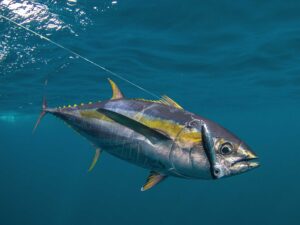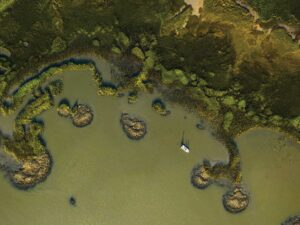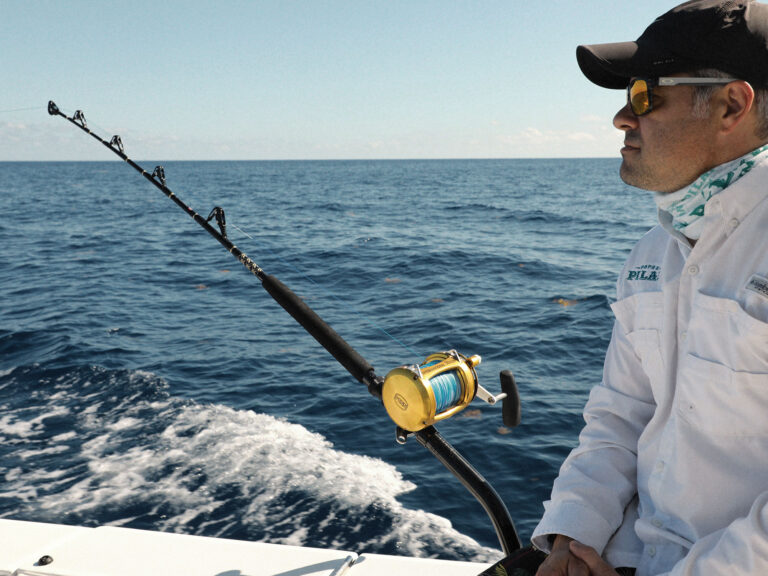
A serrated hickory branch. A radius bone wrapped in 20-grit sandpaper. Even with gloves on, the texture of the sailfish bill came through as if the polyester and rubber weren’t there.
First mate Marco Solano allowed the anglers on Frenzy this opportunity, a rarity for most charter operations. No one passed. I gripped the bill with both hands, breath running short from hanging over the gunwale. The feral strength of the 110-pound Pacific sail was palpable.
Upon release, the dark blue and gold on its flanks disappeared first, the silver on its head the last thing visible. Then it was over. And then it started all over again.
Yes, there is a high season (January through May) and a low season (June through October), but Quepos, Costa Rica, offers great fishing for all the months you’re not carving turkeys or decorating trees. Whether offshore or inshore, its waters are generous. In some cases, it seems as if Quepos only competes with itself. Consider the Lucas Oil Offshore World Championship, which set a record with 2,735 billfish releases in 2014, then reset the bar with 2,840 releases a year later. Consider the all-tackle world record for Pacific black snook, caught along the Quepos coastline by Florida fishing guide Ward Michaels in 2014. The 60-pound monster bested the 57-pounder caught two decades earlier in Quepos’ Naranjo River.
“Quepos was the beginning of sport fishing in Costa Rica,” says Dan Jacobs, executive director of the Lucas Oil Offshore World Championship. Jacobs remembers his first trips to Quepos in the early 1990s, when word was just getting out about an untapped fishery on the country’s Pacific side. “There was no marina. You’d walk down the finger pier, climb down a rusty ladder, hop on a skiff and head out to the sport-fisher.”

Fishing in Quepos predates the 1990s. The seeds were planted 5 million years earlier, when we all looked like Pacific black snook. The Cocos and Rivera plates collided, creating mountainous peaks and volcanoes, and a dramatic offshore shelf. Forty miles offshore, you’re in 4,500 feet of water. Fifty miles offshore, it drops to 11,000. The upwellings of cold, nutrient-rich water on the shelf attract baitfish, which in turn attract all the game species whose silhouettes adorn the walls, windows and public spaces of Marina Pez Vela.
A mixed-used development the size of a high-school football stadium, a marina with 195 slips, and a 200-ton Marine Travelift, Marina Pez Vela is a Central American original. The shops and restaurants are populated by gringos and Quepeños; high-end villas occupy the second level. Technicolor Adirondack chairs are scattered about. Family movie night takes place in the Astroturfed pavilion, the show starting after the green parrots are done roosting in the palm trees that line the waterfront where mega-yachts and sport-fishers neighbor metal skiffs and runabouts.
But visitors don’t come for the chairs or movies. They come for the same reason as Ken Cofer, who relocated his charter operation and 57-foot Spencer Tranquilo from Nicaragua to Quepos a few years back. Over three days, the Salt Water Sportsman team was introduced to Marina Pez Vela, and Quepos’ inshore and offshore action.
Inshore: The Rooster Crows
With the sun still rising, Big Eye II, a 32-foot Black Watch, and CaribSea, a 46-foot Guthrie, departed Marina Pez Vela and headed southeast. The ride is head-turning. Black-sand beaches nestle into protected coves. Trees jut out diagonally from steep cliffs, creating a canopy over the water.
The targets — cubera snapper and roosterfish — prefer the coastal shallows. CaribSea was prepped with live bait (moonfish, to be specific), 30-pound Shimano reels and matching Connley custom rods.
Big Eye II had the most success, hauling in roosters in the 20-pound range. Their youth was evident in their long dorsal streamers, which shorten with age. Capt. Glen Morales of CaribSea expertly navigated the rock outcroppings and the water swirling around them. He gently edged up to the rocks, suction and swell rocking the boat, the gunwale an arm’s length from impact.

Offshore: Flash Sails
Marco Solano dropped out of high school at age 14. His father, a charter captain, was quite surprised. “My dad said, ‘What are you going to do?’ I said, ‘Come work for you!'” At age 34, Solano has already been mating for two decades. As the first mate on Frenzy, he’s equal parts angler and concierge.
The dredge on the port side consisted of a pink squid daisy chain and tuna flapjacks; to starboard, a dredge of holographic teasers simulated schooling baitfish. Chin-weighted ballyhoo filled out the trolling spread.
The morning bite was on. Sailfish smashed bait left and right; a double left anglers to duck and dive and clear line as they maneuvered around the cockpit. Art director Milena Garces found herself hooked up to a 100-pound sail. She reeled down on a Shimano TLD two-speed as the fish danced 30 yards behind the transom. Once the sail was leadered to the boat, Garces put on gloves and held it proudly — one hand on the bill, one on the tall dorsal.
In the early afternoon, a school of dolphin rolled in, and the fish box started to fill. A 30-pounder was cleaned and packed into bags, but a fat fillet was reserved for Solano’s signature recipe, which he got from his grandmother: mahi in chile juice, a ceviche-style dish with mahi, chopped red onion, canned jalapeño juice, lime and salt.
Senior Editor Alex Suescun gave the greenhorns on Tranquilo first crack at every hookup and waited patiently for his chance to catch a sail on fly, which required the cockpit be dedicated to this singular purpose.
Hookless teasers were set out on the left outrigger; the port side cleared so the right-handed Suescun could cast. Two hookless baits trailed on flat lines. When the sail rose to the surface, first mate Daniel Arrieta quickly dropped a hookless bait in front of the fish to lead it within casting range as second mate Gustavo Muñoz and Capt. Roger Muñoz pulled in the teasers.
Arrieta jerked the teaser bait from the water as Suescun dropped a 10-inch pink-and-white tube fly 3 feet ahead of the sail. It pounced, greyhounding away from the boat. Suescun kept the pressure on as it sounded. Twenty minutes later, the leader came to hand. Gustavo held the exhausted sail fast alongside, allowing water to flow over its gills to revitalize it.
And then it was over. And then, just as quickly, it started all over again.


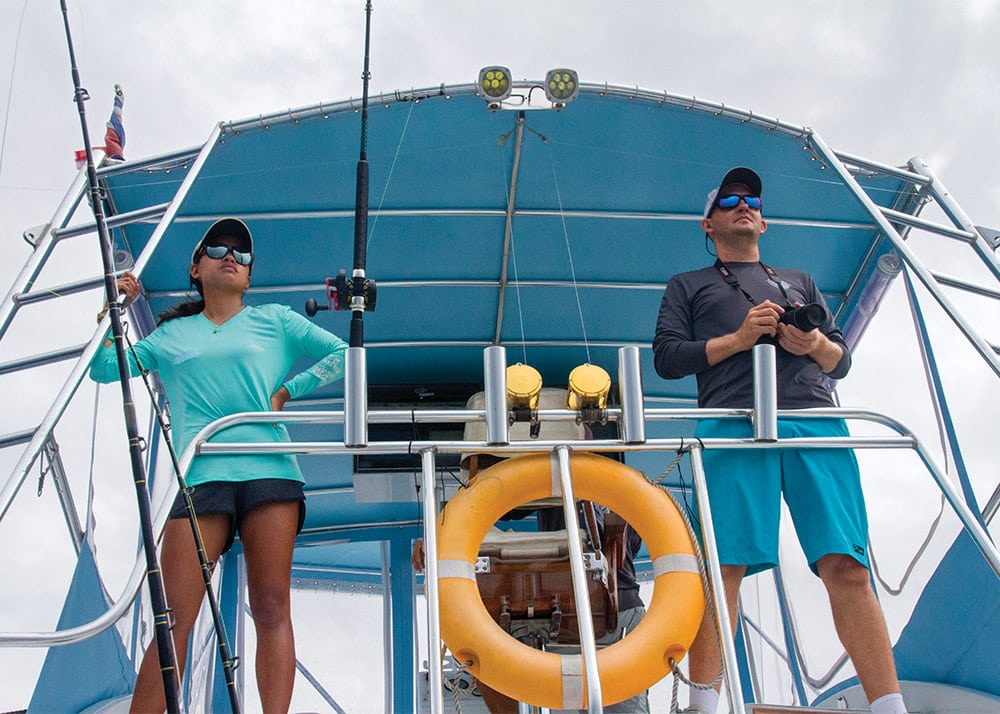
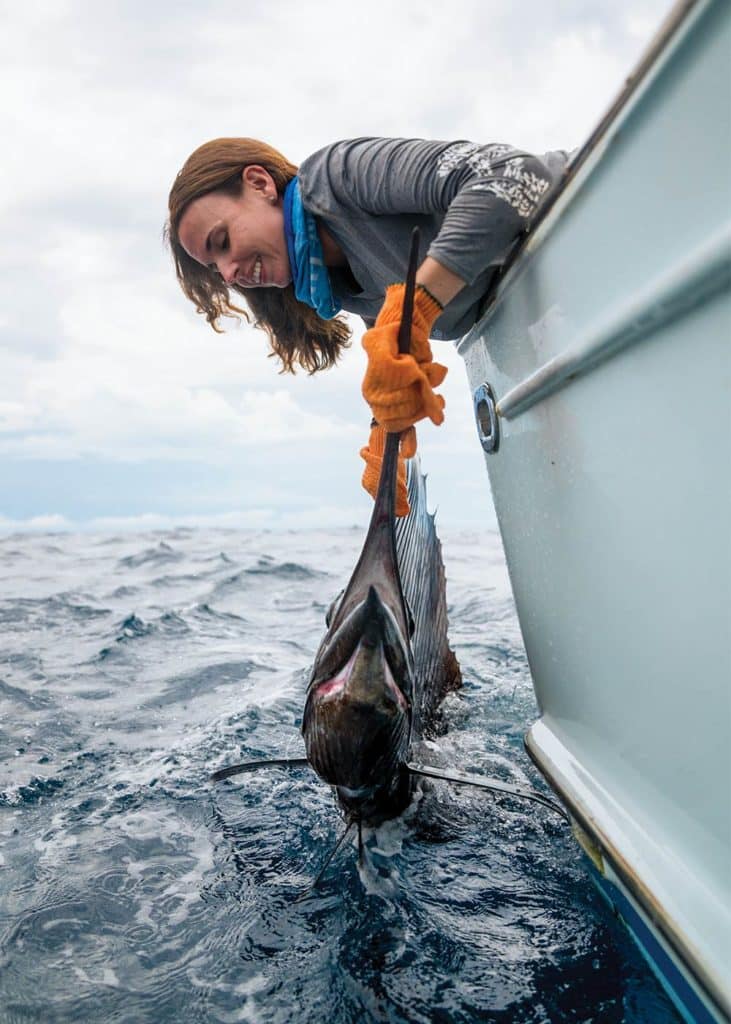



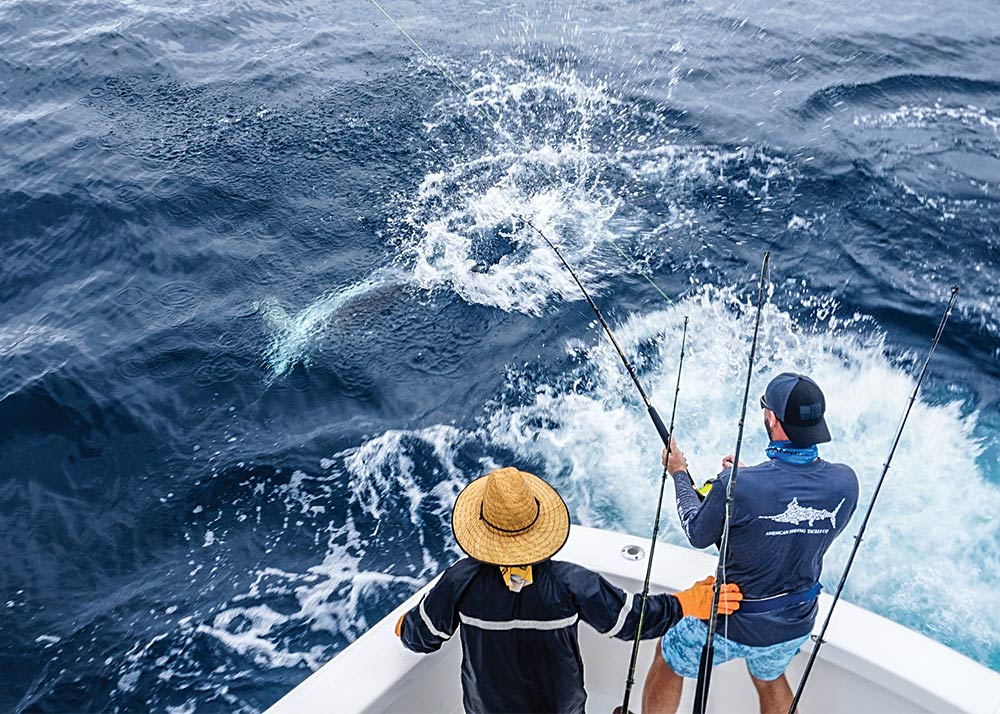

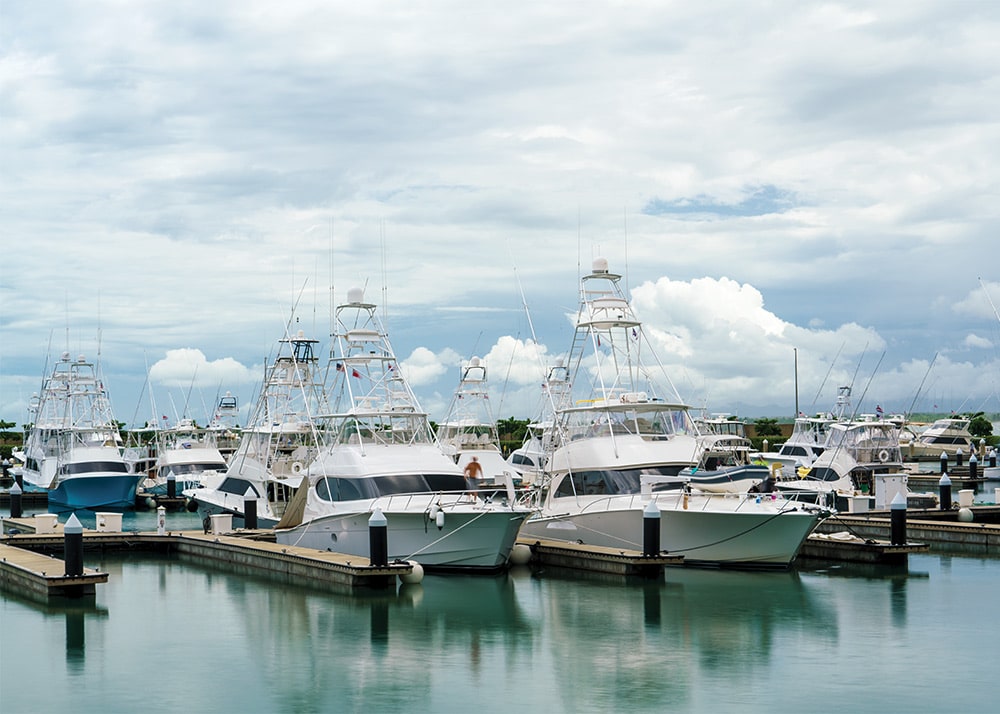
Full Service
Marina Pez Vela offers a full range of services and accommodations for anglers, whether you arrive by boat, 90-minute car shuttle or a short-hop flight from Juan Santamaría International Airport in San Jose. Two- and three-bedroom villas (marinapezvelavillas.com) are available on-site, just steps from the charter docks and even closer to a variety of restaurants and shops on the property.
Inshore and offshore charter arrangements are expertly tailored for the kind of fishing you want to do, from roosterfish, snapper and snook, to tuna and billfish, by iFish Quepos (ifishquepos.com), or you can book directly with individual boats: Big Eye II, Black Watch 32 (bigeyecharters.com); CaribSea, 46 Guthrie (caribseasportfishing.com); Pacific Fly, Maverick 43 (mavericksportfish.com); Frenzy, Maverick 43 (frenzysportfishing.com); Tranquilo, 57 Spencer (tranquilocharters.com).

